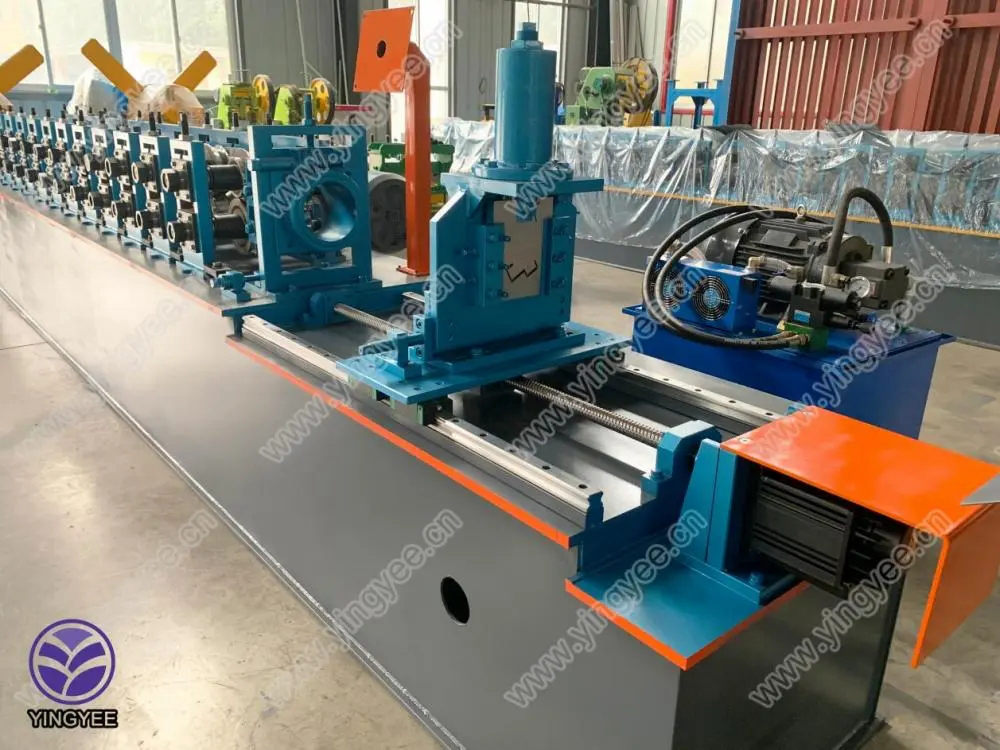
The Advancements in Galvanizing Pipe Making Machines
The manufacturing industry has seen tremendous advancements over the past few decades, particularly in the production of galvanized pipes. Galvanization, a process that involves applying a protective zinc coating to steel or iron to prevent rusting, has become a cornerstone in numerous applications, including construction, plumbing, and electrical infrastructure. At the heart of this process is the galvanizing pipe making machine, a vital piece of equipment that enhances efficiency, quality, and product longevity.
Understanding Galvanized Pipes
Galvanized pipes are known for their durability and resistance to corrosion, making them suitable for various environments, ranging from residential plumbing systems to industrial applications. The galvanization process involves cleaning the steel surface, applying a zinc coating, and ensuring that the coating adheres through either hot-dip galvanization or electro-galvanization. Both methods require precise control over temperature and chemical composition to produce high-quality pipes that can withstand rough conditions.
The Role of Pipe Making Machines
Modern galvanizing pipe making machines are designed to streamline the entire production process. These advanced machines come equipped with state-of-the-art technology that enhances the speed and accuracy of production. Automation plays a crucial role, reducing human error and ensuring consistent quality across batches.
The key components of a galvanizing pipe making machine typically include
2. Forming Units These units are responsible for shaping the steel sheets into cylindrical pipe forms. Using techniques such as roll forming, the machine can produce pipes of various diameters and thicknesses tailored to specific applications.

3. Welding Units Following the forming stage, welding units fuse the edges of the formed pipes together. Advanced techniques such as High-Frequency Induction (HFI) welding provide strong seams that are crucial for maintaining the integrity of the pipes under pressure.
4. Galvanizing Tank This is where the actual galvanization occurs, with pipes being submerged in a molten zinc bath. The temperature and immersion time are carefully regulated to ensure a uniform and durable zinc coating.
5. Cooling and Drying Section After galvanization, pipes must be cooled and dried efficiently. Proper cooling prevents warping and ensures that the pipes maintain their intended dimensions.
6. Cutting and Finishing Units Once galvanized, pipes can be cut to specific lengths and undergo finishing processes that may include painting or additional coatings for enhanced protection.
Efficiency and Environmental Considerations
Today's pipe making machines are designed with efficiency in mind, minimizing waste and maximizing output. Improved energy consumption methods and the recycling of leftover materials significantly reduce the environmental impact of the production process. Furthermore, many modern machines are equipped with monitoring systems that track performance metrics in real time, allowing manufacturers to optimize production schedules and reduce downtime.
The Future of Galvanizing Pipe Making Machines
As technology continues to advance, we can expect further improvements in galvanizing pipe making machines. Innovations such as the integration of Artificial Intelligence (AI) for predictive maintenance, real-time quality control through data analytics, and more environmentally friendly galvanization processes will shape the future of this manufacturing sector. As industries increasingly prioritize sustainability, the evolution of galvanizing machines will undoubtedly align with greener practices.
In conclusion, galvanizing pipe making machines are pivotal in producing high-quality galvanized pipes that meet the demands of modern applications. They embody a blend of innovation, efficiency, and environmental consciousness, setting the stage for a resilient infrastructure of the future. As we move forward, the continued investment in these technologies will undoubtedly yield greater advances in quality and sustainability in galvanized pipe production.